Welcome to the exciting world of text-to-speech (TTS) in Python! This comprehensive guide will take you through everything you need to know about converting text to speech using Python. Whether you're a beginner or an experienced developer, you'll find valuable insights, practical examples, and real-world applications.
What is Text-to-Speech?
Text-to-speech (TTS) technology converts written text into spoken words. Using various algorithms and Python libraries, this technology has become more accessible and versatile.
Getting Started with Python TTS
To begin, ensure you have Python installed. Python 3 is recommended for its updated features and support. You can download it from the official Python website, suitable for Windows, Linux, or any other operating system.
Setting Up Your Environment
- Install Python and set up your environment.
- Choose an IDE or text editor for Python programming, like Visual Studio Code or PyCharm.
Python Libraries for Text-to-Speech
Python offers several libraries for TTS, each with unique features and functionalities.
pyttsx3: A Cross-Platform Library
- pyttsx3 is a Python library that works offline and supports multiple voices and languages like English, French, German, and Hindi.
- Installation: pip install pyttsx3
Basic usage:
```python
import pyttsx3
engine = pyttsx3.init()
engine.say("Hello World")
engine.runAndWait()
```
gTTS: Google Text to Speech
- gTTS (Google Text to Speech) is a Python library that converts text into speech using Google's TTS API.
- It requires an internet connection but supports various languages and dialects.
- Installation: pip install gTTS
Basic usage:
```python
from gtts import gTTS
tts = gTTS('hello', lang='en')
tts.save('hello.mp3')
```
Advanced TTS Features in Python
Python TTS libraries offer advanced features for more sophisticated needs.
Speech Recognition Integration
- Combine TTS with speech recognition for interactive applications.
- Python's speech_recognition library can be used alongside TTS for a comprehensive audio experience.
Customizing Speech Properties
- Adjust the speaking rate, volume, and voice properties using pyttsx3.
- Example: Setting a different voice or speaking rate.
Saving Speech to Audio Files
Save the output speech as an MP3 file or other audio formats for later use.
Real-World Applications of Python TTS
Python TTS is not just for learning; it has practical applications in various fields.
Educational Software
- Assistive technology for visually impaired students.
- Language learning applications.
Automation and Notifications
- Automated voice responses in customer service.
- System notifications and alerts in software applications.
This guide provides a solid foundation for text-to-speech in Python. For further exploration, check out additional resources and tutorials on GitHub or Python tutorial websites. Remember, the best way to learn is by doing, so start your own Python project today!
Try Speechify Text to Speech
Cost: Free to try
Speechify Text to Speech is a groundbreaking tool that has revolutionized the way individuals consume text-based content. By leveraging advanced text-to-speech technology, Speechify transforms written text into lifelike spoken words, making it incredibly useful for those with reading disabilities, visual impairments, or simply those who prefer auditory learning. Its adaptive capabilities ensure seamless integration with a wide range of devices and platforms, offering users the flexibility to listen on-the-go.
Top 5 Speechify TTS Features:
High-Quality Voices: Speechify offers a variety of high-quality, lifelike voices across multiple languages. This ensures that users have a natural listening experience, making it easier to understand and engage with the content.
Seamless Integration: Speechify can integrate with various platforms and devices, including web browsers, smartphones, and more. This means users can easily convert text from websites, emails, PDFs, and other sources into speech almost instantly.
Speed Control: Users have the ability to adjust the playback speed according to their preference, making it possible to either quickly skim through content or delve deep into it at a slower pace.
Offline Listening: One of the significant features of Speechify is the ability to save and listen to converted text offline, ensuring uninterrupted access to content even without an internet connection.
Highlighting Text: As the text is read aloud, Speechify highlights the corresponding section, allowing users to visually track the content being spoken. This simultaneous visual and auditory input can enhance comprehension and retention for many users.
Python Text to Speech FAQ
What is the free text to speech library in Python?
pyttsx3 and gTTS (Google Text to Speech) are popular free text-to-speech libraries in Python. pyttsx3 works offline across various operating systems like Windows and Linux, while gTTS requires an internet connection.
Does gTTS need Internet?
Yes, gTTS (Google Text to Speech) requires an internet connection as it uses Google's text-to-speech API to convert text into speech.
Is gTTS Google text to speech a Python library?
Yes, gTTS is a Python library that provides an interface to Google's text-to-speech services, enabling the conversion of text to speech in Python programs.
Is pyttsx3 safe?
Yes, pyttsx3 is generally considered safe. It's a widely-used Python library for text-to-speech conversion, available on GitHub for transparency and community support.
How to do text to speech on Python?
To perform text-to-speech in Python, you can use libraries like pyttsx3 or gTTS. Simply import the library, initialize the speech engine, and use the say method to convert text to speech. For example:
```python
import pyttsx3
engine = pyttsx3.init()
engine.say("Your text here")
engine.runAndWait()
```
What does speech synthesis do?
Speech synthesis is the artificial production of human speech. It converts written text into spoken words using algorithms and can be customized in terms of voice, speaking rate, and language, often used in TTS (Text-to-Speech) systems.
What is the best Python text to speech library?
The "best" Python text-to-speech library depends on specific needs. pyttsx3 is excellent for offline use and cross-platform compatibility, supporting multiple languages like English, French, and Hindi. gTTS is preferred for its simplicity and reliance on Google's advanced text-to-speech API, offering high-quality speech synthesis in various languages, but requires an internet connection.





